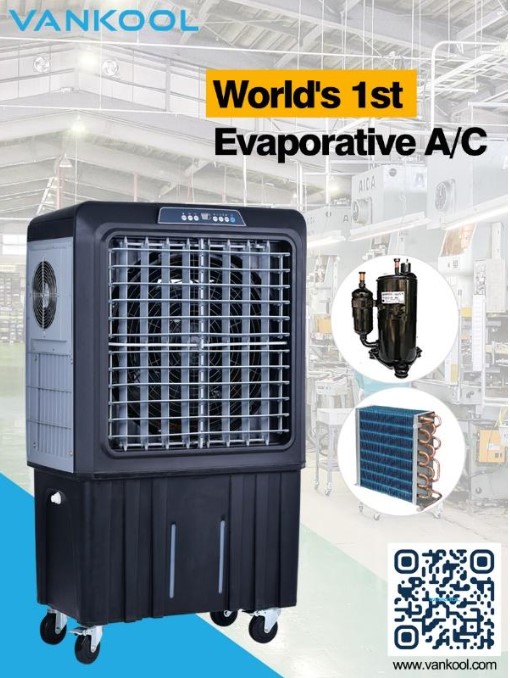
In the realm of climate control and cooling systems, the evaporative air cooler stands as a pioneering innovation, offering an eco-friendly and cost-effective alternative to traditional air conditioning units. This advanced cooling apparatus operates on a principle deeply rooted in nature’s own mechanisms, harnessing the power of evaporation to produce a cooling effect.
Evaporative air coolers, also referred to as swamp coolers or desert coolers, function by drawing in warm air and passing it through moistened pads. These pads contain water, which facilitates the evaporation process. As the air comes into contact with these damp pads, heat is absorbed, and the air temperature decreases significantly, resulting in a refreshing and cooler airflow.
One of the most remarkable advantages of an evaporative air cooler lies in its energy efficiency. Unlike conventional air conditioners that rely on refrigerants and compressors, these coolers utilize a simple yet effective mechanism that consumes notably less electricity. By relying on the natural process of evaporation, they minimize energy consumption, making them an environmentally conscious choice.
Moreover, the operational cost of an evaporative air cooler remains substantially lower than that of traditional air conditioning systems. The reduction in electricity usage translates to cost savings for homeowners and businesses alike, making it an appealing option for those seeking economical cooling solutions.
The design of an evaporative air cooler is structured to be environmentally friendly, emitting fewer greenhouse gases compared to standard air conditioning units. With no ozone-damaging refrigerants or chemical emissions, these cooling systems align with sustainability goals, promoting a cleaner and greener environment.
One notable feature contributing to the effectiveness of evaporative air coolers is their ability to increase humidity levels in dry climates. Unlike air conditioners, which can often exacerbate dryness, these coolers add moisture to the air, providing relief in arid regions while maintaining a … Read the rest
